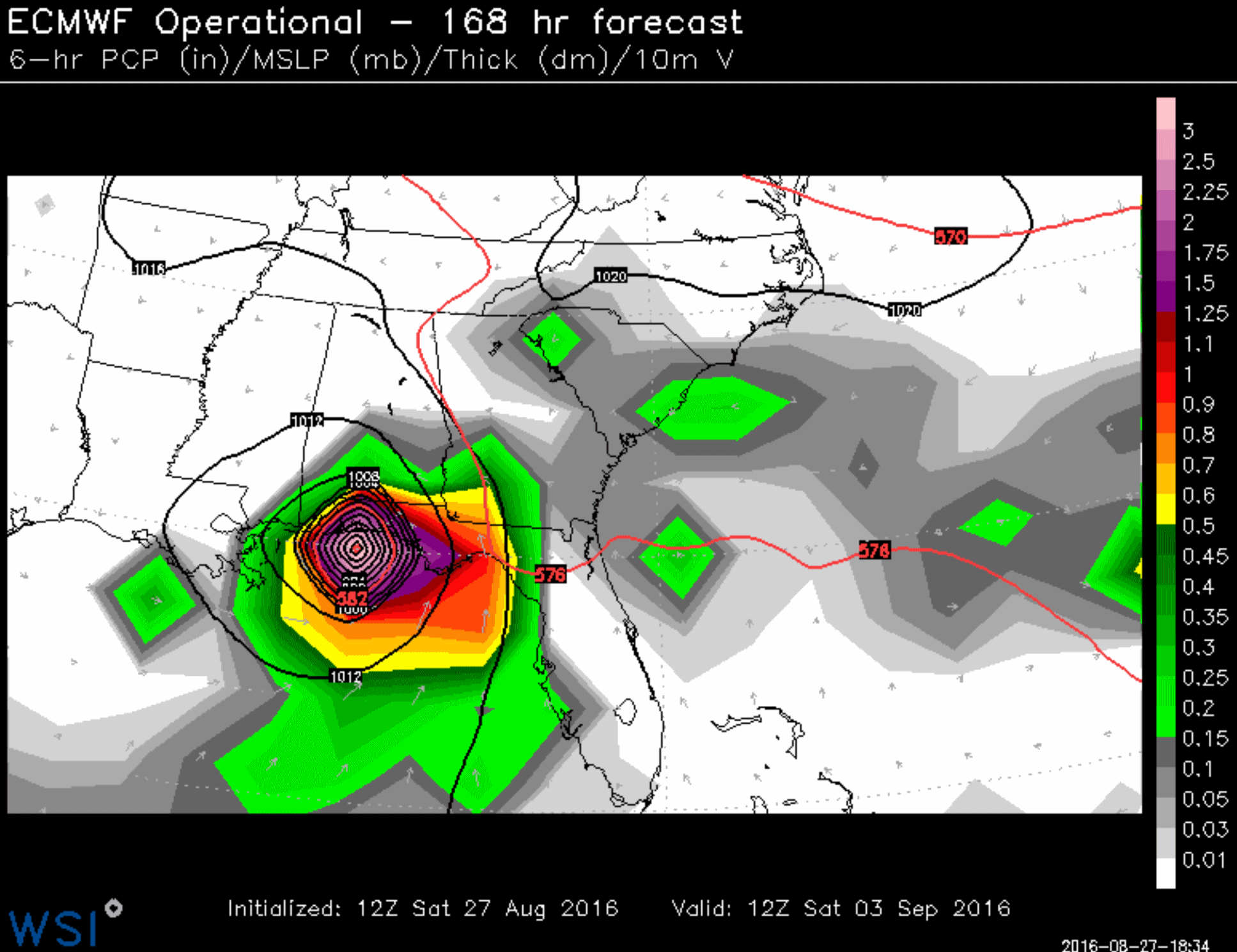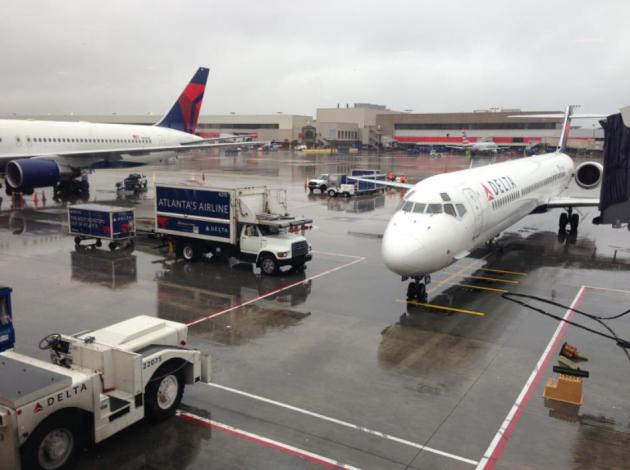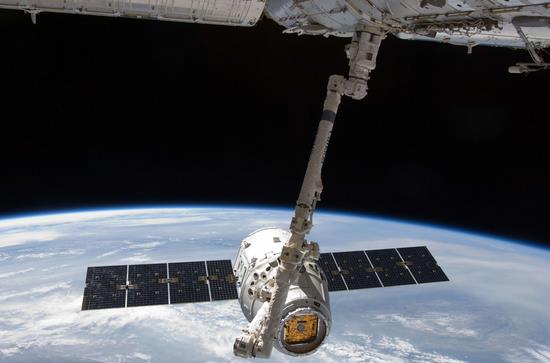68 F. high temperature in the Twin Cities Saturday.
79 F. average high on August 27.
76 F. high on August 27, 2015.
August 28, 1989: Baseball-sized hail pummels Pequot Lakes.
Warming Trend - Growing Threat of "Hermine""Hurricane
season brings a humbling reminder that, despite our technologies, most
of nature remains unpredictable" wrote Diane Ackerman. I couldn't agree
more.
We track hurricanes from space with updates every 15
minutes, giving the illusion that people can wait until the last minute
to evacuate inland. When hundreds of thousands of people living on
barrier islands hop into their cars at the same time the result is
gridlock. One of many scenarios emergency planners worry about.
We
like it when computer models agree with each other, and run to run
(there are 4 major updates every day). This rarely happens, so you look
at the trends and hope for (eventual) consensus.
The storm north
of Cuba may yet strengthen into a hurricane in the Gulf of Mexico with
possible landfall later this week, anywhere from Tampa to Mobile. The
normally-reliable ECMWF model now spins up a hurricane in the Gulf, so
my confidence level is going up.
Expect spurts of warm sun and an isolated T-storm today; a better day to wander the State Fair. Expect 80s today into
Tuesday; again next weekend as we start September on a thundery and sweaty note.
If you have friends/family in Florida or the Gulf Coast - keep an eye on the tropics.
* Map above: Tropicaltidbits.com. As of last night
NOAA NHC predicted a 40% chance of tropical storm strength within 48 hours; a 50% risk of Tropical Storm Hermine within 5 days.
Tampa, We Have a Problem.
If you believe NOAA's HWRF model, that is. A few model runs on Saturday
bring "Hermine" into the Gulf Coast of Florida near Tampa on Wednesday;
a solution that is becoming increasingly believable. That said,
confidence levels remain low. Map: WeatherBell.
 European Model Looking More Ominous
European Model Looking More Ominous.
After killing off the storm last week Saturday's 12z ECMWF model showed
a rapidly-strengthening "Hermine"pushing into Mobile or Pensacola late
Friday of this week. Timing, track and intensity is still very much up
in the air; people living along the Gulf Coast from Naples to New
Orleans need to pay close attention. Map: WSI.
Summer Hanging On.
Today should b e warmer with low 80s, a 1 in 3 chance of a stray
T-storm as dew point rise close to 70F, up into the oh-zone. Very slight
cooling by midweek gives way to more 80s by next weekend as a strong
and sticky south wind returns. ECMWF numbers: WeatherBell.
This New Weather Satellite is a Game Changer - If It Can Survive The Journey to Launch. Angela Fritz has more information on the eagerly awaited GOES-R launch at
Capital Weather Gang: "...
They are
meticulous. Any disturbance — a misplaced step, exposure to the wrong
air molecules, an uncontrollable sneeze — has the potential to leave the
United States, and the rest of the world for that matter, without
critical weather observations that save lives. If it successfully
launches in November, the National Oceanic and Atmospheric
Administration satellite will monitor things like hurricanes and
blizzards from space with higher resolution than any other U.S.
satellite of its kind. It will be a game-changer for weather
forecasting. “Up. Up. Up,” says the crane operator, breaking the
otherwise silent focus of the room. The lid rises like a shoe box to
reveal the satellite — called GOES-R — on its side and mounted to the
container base..."
Photo credit: Lockheed Martin.
Hurricanes Are Worse, But Experience, Gender, and Politics Determine If You Believe It. Here's an excerpt of interesting new research from
Princeton University: "...
The
researchers plumbed data from a survey of Gulf Coast residents and
found that the severity of the most recent storm a person weathered
tended to play the largest role in determining whether they believed
storms were getting worse over time, according to the study
published in the International Journal of Climatology. The survey was
conducted in 2012 before Hurricane Sandy, the second-most expensive
hurricane in history, caused $68 billion in damage. Respondents'
opinions also strongly differed depending on whether they were male or
female, whether they believed in climate change and whether they were a
Democrat or a Republican. For instance, people who believe in climate
change were far more likely to perceive the increasing violence of
storms than those who did not. The researchers noted that because
climate change has become a politically polarizing issue, party
affiliation also was an indicator of belief in strengthening storms..."
Map credit: "
Princeton
University-led research found that people's view of future storm threat
is based on their hurricane experience, gender and political
affiliation, despite ample evidence that Atlantic hurricanes are getting
stronger. This could affect how policymakers and scientists communicate
the increasing deadliness of hurricanes as a result of climate change.
The figure above shows the wind speed of the latest hurricane landfall
(left) on the U.S. Gulf Coast by county up to 2012, with red indicating
the strongest winds. The data on the right show for the same area, by
county, public agreement with the statement that storms have been
strengthening in recent years, which was posed during a 2012 survey.
Blue indicates the strongest agreement, while red equals the least
agreement."
(Image courtesy of Ning Lin, Department of Civil and Environmental Engineering).
Three Minnesota Sites Plan Future Net Zero Neighborhoods.
Midwest Energy News has the story: "
Three
sprawling development sites in the Twin Cities that are expected to see
thousands of new residents and billions in investment in the next
decade are planning for a net-zero future. Each of the sites will likely
feature district energy systems, encourage or require efficient
buildings and be powered to a large degree by renewable energy. And each
of them has an existing thermal heating and cooling source to meet the
needs of new apartments, businesses and homes. In most cases the sites,
which are in existing neighborhoods, will be densely developed and have
transit options, as well as proximity to retail and business
establishments..."
Photo credit: "
The site of this
former Ford assembly plant, now demolished, is among three locations
around the Twin Cities being eyed for net zero (or close to it)
development."
The EPA's Chance to Make Air Travel Greener. Here's an excerpt from
Bloomberg View: "
The Environmental Protection Agency's intention to limit greenhouse-gas emissions from airplanes may sound like a small thing. U.S. aircraft are responsible for just 3 percent of U.S. carbon dioxide emissions, and 0.5 percent
of total emissions worldwide. In the U.S., coal-fired power plants
generate almost seven times as much carbon dioxide as planes. But air
travel grows by 5 percent a year, and by 2050, if nothing changes, the
industry will consume more than one-quarter
of the world's remaining "carbon budget" -- the amount of CO2 that can
be emitted without increasing global temperatures more than 1.5 degrees
Celsius above pre-industrial levels..."
U.S. Renewable Electricity Production Beat Previous Years For Each Month in 2016. Greentech Media has the story: "
For those of us who have grown weary of each new month setting a "hottest-ever"
record, here’s a more encouraging monthly trend. For each month this
year, renewable energy production in the U.S. has exceeded the same
months in all previous years, according to the U.S. Energy Information Administration.
That achievement is particularly notable because it happened in spite
of below-average hydroelectric output caused by drought along the West
Coast..."
Photo credit: Flavio Massari / Shutterstock.com.
The Falling Costs of Solar Power, In 7 Charts. Dave Roberts has the story at Vox; here's a link and excerpt: "The
fate of the world depends on driving down the cost of solar power. Yes,
that’s a melodramatic way of putting it. But it’s not wrong. Any
scenario that has humanity avoiding the worst ravages of climate change
involves explosive global growth in solar power. That’s why the US
Department of Energy has a program, the SunShot Initiative,
devoted entirely to driving down the cost of electricity generated by
solar panels — the target is solar power with $1 per watt installed
costs by 2020, a 75 percent reduction in costs from 2010. So how’s that
going? Happily, Lawrence Berkeley National Laboratory (LBNL) releases a
set of reports each year devoted to tracking solar prices; they’ve just
released the latest editions. Long story short: Prices are steadily
falling, more or less on schedule..."
Graphic credit: LBNL
.
The Inside Story of How Billionaires Are Racing To Take You to Outer Space.
The Washington Post reports: "...
Nearly
five decades after the United States beat the Soviet Union to the moon,
another space race is emerging, this time among a class of hugely
wealthy entrepreneurs who have grown frustrated that space travel is in
many ways still as difficult, and as expensive, as ever. Driven by ego,
outsize ambition and opportunity, they are investing hundreds of
millions of dollars of their own money in an attempt to open up space to
the masses and push human space travel far past where governments have
gone..."
Photo credit: NASA.
Why Doctors Once Treated Fevers and Hysteria With Mashed-Up Bedbugs. Up until the 18th century bedbugs were used as medicine. Ugh. Here's an excerpt from
Atlas Obscura: "...
For at least 3,500 years, humans have wanted to be rid of bedbugs. Finding their round, flat bodies at home today causes panic, paranoia,
and expensive extermination treatments; many move away from their homes
or discard infested objects they once held dear. But from ancient
history onward, some physicians used the parasites, in earnest, for
medical cures and recipes. The creatures were a medical cure-all
beginning in the waning years of the last century B.C..."
Image credit: "A bed bug at different stages, as depicted in the 1902 book The Bedbug." (Photo: Internet Archive/Public Domain).

 TODAY
TODAY: Sticky sunshine, stray T-storm possible. Winds: S 10-15. High: 84
SUNDAY NIGHT: Warm and humid. Low: 69
MONDAY: Warm sun, few T-storms bubble up late. Winds: S 10-15. High: 86
TUESDAY: Partly sunny, drying out. Winds: N 8-13. Wake-up: 67. High: 82
WEDNESDAY: Sunny, temps. close to average. Winds: E 5-10. Wake-up: 59. High: 79
THURSDAY: Lot's of sun, warming breeze. Winds: SE 8-13. Wake-up: 60. High: 81
FRIDAY: Intervals of sun, muggy again. Winds: S 10-20. Wake-up: 62. High: 83
SATURDAY: Some sun, risk of a T-storm. Winds: S 10-15. Wake-up: 64. High: 84
Climate Stories...
Farming, Soil and Water, In The Time of Climate Change. Here's an excerpt from
New England Public Radio: "...
We
got a lot of farmers calling us, asking for some information about
transitioning to no-till,” Hashemi said, referring to a land practice
of leaving fields unplowed, and planting crops on top of leftover
vegetative matter from preceding crops. It’s a practice researchers at
many agriculture schools in the United States are preaching, to prevent
soil erosion. The unturned earth can take on the qualities of a sponge.
Even some states are pushing the practice. In Vermont, new mandates go
into effect by the end of the year, meant to encourage no-till farming.
While the state decision is more an attempt to keep fertilizers from
leaching into lakes and rivers, no-till farming, Hashemi will tell you,
is “sustainable farming...”
File photo: Nati Harnik, Associated Press.
Just 90 Companies Are To Blame for Most Climate Change, This "Carbon Accountant" Says. Here are a couple excerpts from
Science AAAS: "...
Heede
is less well known than his fellow recipients, but his work is no less
threatening to the fossil fuel industry. Heede (pronounced "Heedie") has
compiled a massive database quantifying who has been responsible for
taking carbon out of the ground and putting it into the atmosphere.
Working alone, with uncertain funding, he spent years piecing together
the annual production of every major fossil fuel company since the
Industrial Revolution and converting it to carbon
emissions....Heede's carbon accounting is already opening a new chapter
in climate change litigation and policy, helping equip plaintiffs who
believe they have suffered damages from climate change to claim
compensation. "Rick's work really helps connect the dots," says Marco
Simons, general counsel of EarthRights International, a Washington,
D.C.-based legal group that defends the rights of the poor..."
Graphic credit: J. You/
Science; (Data Source) Richard Heede.
Extreme Weather and Climate Change. Check out 2 experts I have a lot of respect for, Heidi Cullen and Admiral David Titley (retired) at
WHYY's Radio Times podcast: "
Severe
flooding in Louisiana has killed 13 people and damaged or destroyed
over 60,000 homes. In California, a five-year drought and scorching
weather has fueled the Blue Cut fire, among others in the state. And
around the globe, this past July was the hottest month on record. Are
these extreme weather events evidence of climate change? How do
scientists connect the dots and what weird weather should we expect in
the coming decades? This hour we’ll explore the link between intense
weather and the warming planet with HEIDI CULLEN, chief scientist at Climate Central, and DAVID TITLEY,
a professor of meteorology at Pennsylvania State University and the
founding director of their Center for Solutions to Weather and Climate
Risk."
Humans Have Caused Global Warming for Longer Than We Thought. Here's an excerpt from a story at
TIME: "
People
have been contributing to global warming since the mid-nineteenth
century, decades before scientists previously estimated, according to
new research
published in the journal Nature. The study questions the perception of
climate change as primarily a 20th century phenomenon and provides new
evidence of how quickly the Earth’s atmosphere responds to increased
levels of greenhouse gas emissions. Even relatively low levels of
greenhouse gas emissions in the first decades of the Industrial
Revolution contributed to a temperature increase, according to the
research..."





No comments:
Post a Comment